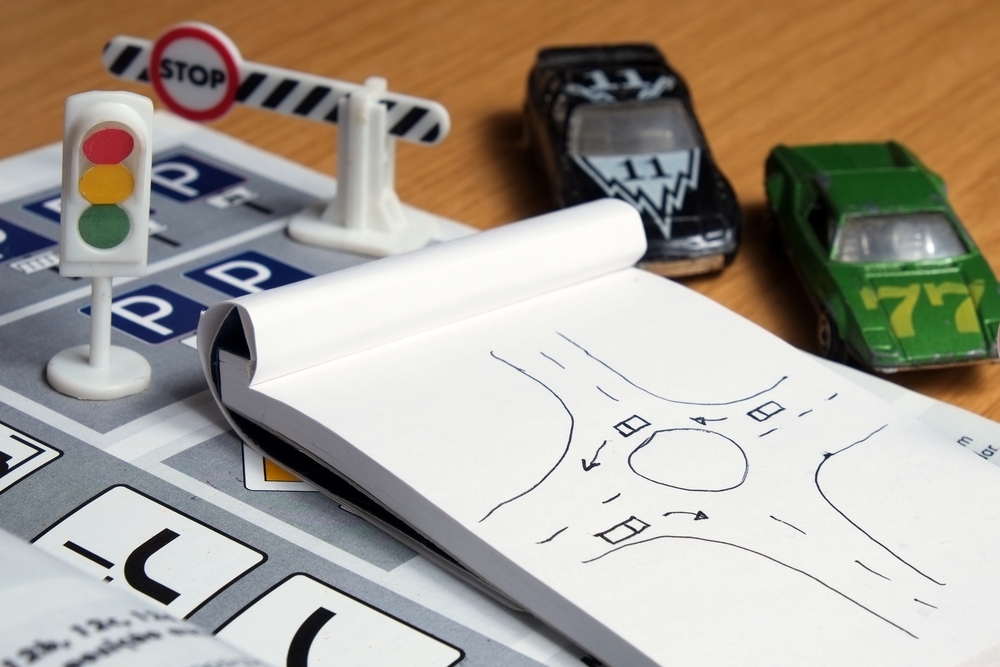A guide to getting your driver's licence in Ontario
In the process of getting your driver's licence and need car insurance? Compare rates now.
Compare car insurance quotes with other top providers in Ontario
Each province has a slightly different licensing process for new drivers. Ontario requires their drivers to go through a graduated licencing program that can take at least 20 months to complete. There are two levels that drivers must pass (G1 and G2) before obtaining their full G licence required to drive a car, van, or small truck. Drivers have five years to complete the process, and failure to do so means that they’d have to start all over again.
The first two levels have restrictions on where and when new drivers can drive, whilst there are no such restrictions on the G licence. The benefit of a graduated licencing program is that it allows drivers to ease into different environments, helps them improve their driving skills, and attain experience gradually.
Let’s walk through the process of getting your driver’s licence in Ontario:

Abridged guide to the G1
The G1 licence is also known as the learners permit, and you must be 16 years of age before applying for it.
Requirements of a G1 licence
Whenever you're ready to apply for your G1, visit any DriveTest centre. Make sure you have:
- At least two identification cards that include your date of birth and legal name. This can be your passport, Canadian citizenship card, a permanent immigration document like a permanent resident card, or a temporary immigration document like a study permit.
- Contact lenses or eyeglasses, as the G1 test includes a vision test.
- The fee for the G1 licence package. The current fee is $159.75 and includes the cost of a knowledge test, a class G2 road test, and a five-year licence.
Know your road rules - The knowledge test
To prepare for the knowledge test, purchase and study the Ministry of Transportations (MTO) Drivers Handbook. The handbook costs $14.95, and can be purchased online through Service Ontario, at any DriveTest centre, or at retail stores.
You can also take a few practice tests online. The examination includes rules of the road, traffic signs, and practical driving tips.
To pass the knowledge test, you must score above 80 per cent. Retakes or additional attempts cost $16 per retest.
Restrictions on a G1 licence
By Ontario law, there are certain restrictions on drivers who hold a G1 licence. They must:
- Maintain a blood alcohol level of zero.
- Make sure everyone in the car is wearing a seat belt.
- Drive only between the hours of 6 a.m. and 11 p.m.
- Drive with a fully licenced driver who has at least four years of driving experience, and a blood alcohol level of less than 0.05 (or zero blood alcohol level if they are under 21 years of age).
- Drive on local roads only, unless accompanied by an Ontario-certified instructor. This excludes highways (400-series) or high-speed expressways.
You have 12 months to practice driving with your G1 licence before you can apply for the G2. However, you can apply within eight months if you complete an MTO-certified driving course.
Read more: Requirements and restrictions for getting your G1 in Ontario
Abridged guide to the G2 licence
An MTO-certified driving course has three parts: classroom instruction, in-vehicle training, and flexible instruction. The course should have a minimum of 20 hours of classroom instruction (delivered either in-person or online), a minimum of 10 hours of in-vehicle training delivered by a licenced instructor, and 10 hours of flexible instruction time which may be used for driving simulation or additional classroom and in-vehicle training.
The driving lessons typically cost $600, but this can vary depending on the school and number of lessons you have opted for. While it’s easier to attend classes at a school close to your home, make sure it’s on the government’s list of approved schools.
After completing the beginner driver education course, the driving school will certify you online and your student driver record will be updated through the MTO. If you need proof to demonstrate that you’ve completed the MTO-certified course, you can get this for a fee of $12.
Requirements of a G2 licence
When you’re ready to apply for the G2, you can book a road test appointment by calling or visiting any DriveTest centre. Be sure to provide your G1 licence number, a preferred date, time, and location for your test when you book. On the day of your appointment, get to the test centre early (DriveTest recommends 30 minutes before your appointment), and bring the following:
- Your G1 licence.
- Eyeglasses or contact lenses, if you need them to see while driving.
- Your own vehicle. The testing centre does not provide vehicles, so you should bring your own. You can borrow a car from your parents or friends. But make sure you are comfortable with the car, that the vehicle’s insurance, licence and registration plates are up-to-date, and that the vehicle is in good working condition, without any defective tires and faulty blinkers or turn signals.
If your car itself isn’t road-worthy, the examiner can declare your road test “out-of-order” and you’ll lose 50% of your road test fee. - The fee. If applicable, the fee for the driving test is $53.75.
Getting ready for the road
The road test is approximately 20 minutes long, and the instructor will test you on your ability to follow rules of the road and safe driving practices. Some common things instructors look out for are obeying traffic signs, driving through controlled and uncontrolled intersections, reversing and parallel parking, and starting, stopping, and turning.
You are not allowed to rely on electronic driving aids such as back cameras and parallel-parking systems. The driving instructor is also not permitted to prompt you in the car during the test.
After the test, the examiner awards you a pass or fail status, as well as any feedback on your skills and mistakes. If you fail, you will have to take a road test appointment again. For every attempt, you must pay a fee of $53.75.
Restrictions on a G2 licence
- A G2 licence has fewer restrictions than the G1, and G2 drivers are allowed to drive on all expressways and without supervision. But, nonetheless, there are a few restrictions on drivers who hold a G2 licence. By Ontario law, they must still maintain a blood alcohol level of zero
- The following restrictions apply to drivers aged 19 and under and between the hours of midnight and 5 a.m.:
- Can carry one passenger, 19 or under, in the first six months of receiving your G2.
- Can carry three passengers, 19 or under, after the first six months of receiving your G2.
- Can carry more than three passengers, 19 or under past midnight if you’re accompanied by a fully licenced driver who has at least four years of driving experience.
You have 12 months to practice driving with your G2 licence before you can apply for the G or complete licence.

Abridged guide to the full G licence
Requirements of a G licence
When you're ready to apply for your G licence, you need to book a road test appointment just like you did when applying for G2 by calling or visiting any DriveTest centre and setting up a time and location for your appointment. On the day of your appointment, arrive at the test centre early, armed with the following:
- Your G2 licence.
- Eyeglasses or contact lenses, if you need them.
- Your own vehicle. Again, be prepared to bring your own vehicle. Make sure that the car is in good working condition and that you're comfortable driving it.
- The fee. If applicable, the fee for the G road test is $91.25.
Once you get there, you'll need to sign the Declaration of Highway Driving Experience form.
This form attests that you've driven at least five times on a freeway or highway at a speed limit of at least 80km/h in the past three months and will ask you details on the average length of these trips. If you don't have sufficient experience, the examiner can declare your road test out-of-order and you'll lose 50% of your fee.
Going for the G
This road test is longer than the G2 road test, and the instructor will test you on more advanced rules and driving practices, including on your ability to merge on, drive, and exit from highways and expressways.
The same rules apply: You're not allowed to rely on electronic driving aids such as back cameras and parallel-parking systems, and no one will be permitted to prompt or accompany you in the car during the test.
After the test, the examiner will award you a pass or fail status, as well as any feedback on your skills and mistakes.
If you fail, you will have to take a road test appointment again. For every attempt, you must pay a fee of $91.25. The fee for a five-year driving licence is $90.
Requirements of a G licence
There are no restrictions on the complete, G licence. You can drive unsupervised at any time of the day. However, under Ontario law, drivers under 21 are still required to main a zero blood alcohol level and drivers who are older than 21 can have blood alcohol levels between 0.05 and 0.08.
All levels and classes of drivers should practice safe driving habits (including making sure everyone in the vehicle wears a seatbelt), always carry a valid licence, have a valid licence plate, and have insurance coverage on their vehicle.
Auto insurance in the graduated licencing program
Under Ontario law, all vehicles should have auto insurance. However, whether you can have a policy under your name or not depends on the licence that you hold in the graduated licencing program.
At G1, you cannot have your own auto insurance policy, but would instead be listed as a secondary driver on someone else’s insurance policy. This can be a parent or guardian.
At G2, you can purchase an insurance policy under your own name. Insurance rates for new drivers are typically 25% to 50% higher than for experienced drivers. This is because insurance companies see an increased risk in insuring young and inexperienced drivers. If you’ve been listed as a secondary driver, you can demonstrate some driving history and benefit from slightly lower insurance rates.
At G level, you can purchase an auto insurance policy under your own name. As you build your driving history, you'll see your auto insurance rates come down.
Read more: Car insurance for G2 drivers in Ontario
How to save on auto insurance
If you’re a young driver and are dreading the high insurance rates you’ll be hit with, fret not. There are still a few ways to save:
- Get listed as a secondary driver: Being listed as a secondary driver on your parent’s policy has its benefits – you’ll save money and will also be building your driving history.
- Complete a government-approved driver’s training program: By successfully completing a government-approved driver’s training program, not only do you save time on your graduated licencing program, but you can also avail a discount of at least 10% on your insurance premium.
- Shop around: It’s always a good idea to shop around and find the lowest rate for the auto insurance coverage that you need.
Save on Ontario auto insurance
Auto insurance rates change often, so how do you know if you're still getting the best deal? By comparing car insurance quotes upon renewal and at other key milestones (such as when you buy a new vehicle, or more to a different neighbourhood) you can make sure your rates remain competitive. Save money by comparing Ontario car insurance quotes today.


